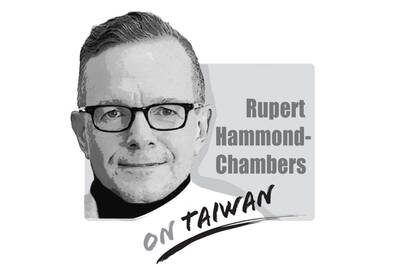On Friday, representatives from several Taiwanese media organizations attended a cross-strait media summit in Beijing cohosted by China’s Beijing Daily Group and the Taiwan-based Want Want China Times Media Group. At the closed-door Cross-Strait Media People Summit — also attended by Taiwan’s United Daily News Group, Eastern Broadcasting Co and TVBS Media — Chinese People’s Political Consultative Conference Chairman Wang Yang (汪洋) called on Taiwanese media to promote a Taiwanese version of Hong Kong’s “one country, two systems” model of governance, advocated by Chinese President Xi Jinping (習近平) in a speech on Jan. 2.
Participation at the event by Taiwanese media organizations — the contents of Wang’s address was subsequently leaked to the wider Taiwanese media — is disturbing and should be viewed through the prism of Beijing’s wider effort to influence public debate in Taiwan. The Chinese Communist Party (CCP) calls this its “united front” strategy — a decades-long “whole of society” campaign to infiltrate and subvert Taiwan’s open and liberal democracy, thereby achieving its goal of unification without the need to fire a single shot. The question is: What should the government do about it?
Predictably, the government has already issued several boilerplate statements criticizing the forum. On Saturday, the Mainland Affairs Council censured Wang for “using a cross-strait media summit as a platform for political propaganda.” President Tsai Ing-wen (蔡英文) has also weighed in, rebuking the CCP for interfering in Taiwan’s internal affairs and the freedom of its press.
Tellingly, both statements refrained from directly criticizing the Taiwanese media organizations in attendance, instead focusing on the forum itself. This might be because officials believe that at least some of the organizations attended in good faith, but were ambushed by Wang’s speech. Officials might also be wary of attacking individual media organizations, lest they are accused of encroaching upon freedom of the press.
However, there are signs that the government is moving toward tighter regulation of the media. Last month, Premier Su Tseng-chang (蘇貞昌) said: “We hope the media can regulate itself, but we have witnessed disconcerting developments, which the public has also condemned... Both self-regulation and laws are needed for effective regulation.”
The Executive Yuan is drafting a bill aimed at regulating false reporting in the media, while National Security Bureau (NSB) Deputy Director-General Ko Cheng-heng (柯承亨) yesterday told reporters his organization is keeping a close eye on domestic media that are either pro-China or share the CCP’s values and are spreading disinformation to influence public debate.
The government is also looking at amending the Criminal Code to allow for the prosecution of individuals who help spread false information. This highlights a significant conundrum for the government: Beijing’s “united front” campaign does not limit itself to traditional media. China is also using Facebook, YouTube and other social media platforms, through which much of the younger generation obtains news reporting, to influence public debate by spreading disinformation and fake news.
Nevertheless, the trend toward online media also presents the government with an opportunity. Beijing’s social media influence campaign, to a large extent, rests upon it being able to fund pro-China content creators in Taiwan. It should be possible for the NSB to track and cut off funding sources linked to China.
However, the government must tread carefully. If it goes down the road of overt media censorship, it will begin to undo all of the progress made through Taiwan’s democratic reforms and will be unwittingly assisting Beijing in its goal of unification by destroying the very freedoms that differentiate liberal Taiwan from totalitarian China.

In the past month, two important developments are poised to equip Taiwan with expanded capabilities to play foreign policy offense in an age where Taiwan’s diplomatic space is seriously constricted by a hegemonic Beijing. Taiwan Foreign Minister Lin Chia-lung (林佳龍) led a delegation of Taiwan and US companies to the Philippines to promote trilateral economic cooperation between the three countries. Additionally, in the past two weeks, Taiwan has placed chip export controls on South Africa in an escalating standoff over the placing of its diplomatic mission in Pretoria, causing the South Africans to pause and ask for consultations to resolve
An altercation involving a 73-year-old woman and a younger person broke out on a Taipei MRT train last week, with videos of the incident going viral online, sparking wide discussions about the controversial priority seats and social norms. In the video, the elderly woman, surnamed Tseng (曾), approached a passenger in a priority seat and demanded that she get up, and after she refused, she swung her bag, hitting her on the knees and calves several times. In return, the commuter asked a nearby passenger to hold her bag, stood up and kicked Tseng, causing her to fall backward and
In December 1937, Japanese troops captured Nanjing and unleashed one of the darkest chapters of the 20th century. Over six weeks, hundreds of thousands were slaughtered and women were raped on a scale that still defies comprehension. Across Asia, the Japanese occupation left deep scars. Singapore, Malaya, the Philippines and much of China endured terror, forced labor and massacres. My own grandfather was tortured by the Japanese in Singapore. His wife, traumatized beyond recovery, lived the rest of her life in silence and breakdown. These stories are real, not abstract history. Here is the irony: Mao Zedong (毛澤東) himself once told visiting
When I reminded my 83-year-old mother on Wednesday that it was the 76th anniversary of the founding of the People’s Republic of China, she replied: “Yes, it was the day when my family was broken.” That answer captures the paradox of modern China. To most Chinese in mainland China, Oct. 1 is a day of pride — a celebration of national strength, prosperity and global stature. However, on a deeper level, it is also a reminder to many of the families shattered, the freedoms extinguished and the lives sacrificed on the road here. Seventy-six years ago, Chinese Communist leader Mao Zedong (毛澤東)